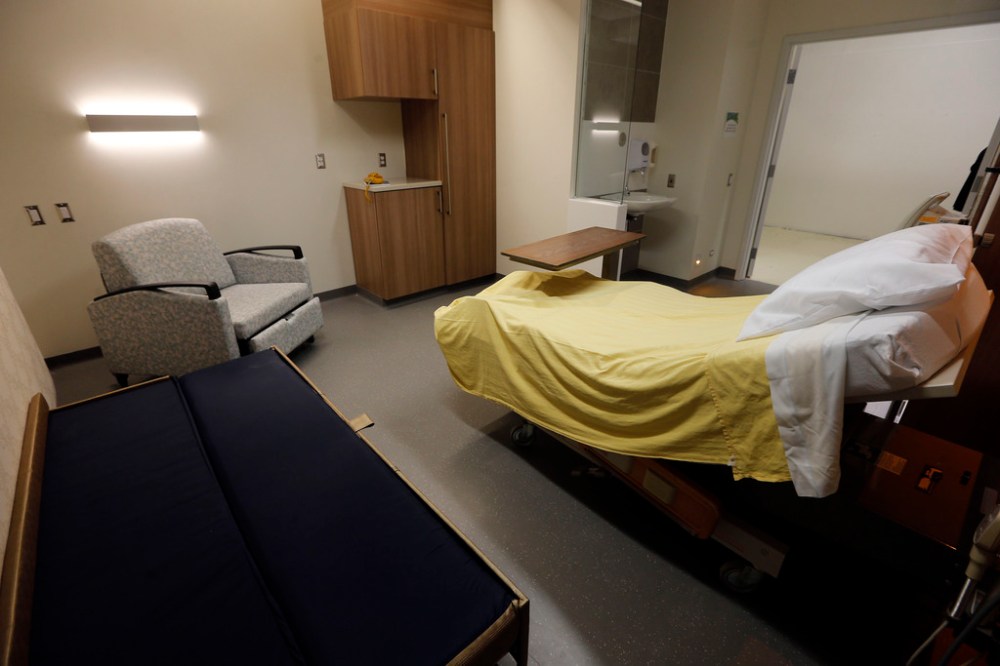Keeping health-care workers healthy critical to hospital plan
Read this article for free:
or
Already have an account? Log in here »
To continue reading, please subscribe:
Monthly Digital Subscription
$0 for the first 4 weeks*
- Enjoy unlimited reading on winnipegfreepress.com
- Read the E-Edition, our digital replica newspaper
- Access News Break, our award-winning app
- Play interactive puzzles
*No charge for 4 weeks then price increases to the regular rate of $19.00 plus GST every four weeks. Offer available to new and qualified returning subscribers only. Cancel any time.
Monthly Digital Subscription
$4.75/week*
- Enjoy unlimited reading on winnipegfreepress.com
- Read the E-Edition, our digital replica newspaper
- Access News Break, our award-winning app
- Play interactive puzzles
*Billed as $19 plus GST every four weeks. Cancel any time.
To continue reading, please subscribe:
Add Free Press access to your Brandon Sun subscription for only an additional
$1 for the first 4 weeks*
*Your next subscription payment will increase by $1.00 and you will be charged $16.99 plus GST for four weeks. After four weeks, your payment will increase to $23.99 plus GST every four weeks.
Read unlimited articles for free today:
or
Already have an account? Log in here »
Hey there, time traveller!
This article was published 06/11/2020 (1860 days ago), so information in it may no longer be current.
Manitoba’s health-care system may have the hospital space, equipment and supplies to handle a large influx of COVID-19 patients. What may be missing is an adequate supply of qualified staff to handle the load, especially if there’s a sharp rise in pandemic-related absenteeism.
Provincial chief nursing officer Lanette Siragusa provided more details Friday of Manitoba’s three-phase plan to expand hospitals, should COVID-19 patient volumes exceed existing capacity. The plan, first announced last week, would see hospitals use surplus space to open more beds and reassign surgical teams to help staff them. Low-acuity, non-COVID-19 patients could be moved off-site in a worse-case scenario.
Shared Health, which co-ordinates clinical care across the province, has beefed up its supply of medical equipment over the past few months, including the purchase of EKG monitors, infusion pumps and oxygen concentrators, said Siragusa. The province has nearly doubled its supply of mechanical ventilators.
Where it may run into problems is finding enough staff. It’s one thing to have the beds, the physical space and the medical equipment; it’s another to have enough trained medical practitioners to run those machines and treat acutely ill patients.

Under the plan, hospitals have the capacity to increase medical beds by over 1,000 (and ICU beds by 143), said Siragusa. But what they don’t have are enough critical care nurses to maintain the standard one-to-one, nurse-to-patient ratio. Instead, ICU “teams” that include one critical care nurse and other allied professionals (such as physiotherapists and pharmacists) will be assembled to treat more than one patient at a time.
Also, about 100 community-based doctors have signed up to provide hospital support if required.
This plan could work if admission rates remain at moderate levels. But if the current COVID-19 trajectory continues, chief provincial public health officer Dr. Brent Roussin said hospitals could be under “significant strain” by the end of the month.
The wild card in all this is infection rates among health-care staff. The more doctors, nurses and allied professionals that become infected and have to stay home, the more difficult it will be to implement this plan. There are no contingency plans if absenteeism explodes.
It’s not as if Manitoba can recruit from other provinces. Even provinces like New Brunswick and Nova Scotia (where infection rates are much lower than the rest of the country) are unlikley to share health-care staff. They know they could be in a similar situation within weeks.
”I’m not going to lie, it’s a challenge we face,” said Siragusa. “We are going to manage the best we can.”
All of this is made worse by staff shortages that existed prior to the pandemic. The province was still working out kinks in its hospital consolidation plan in the months leading up to the COVID-19 outbreak. That included going from six acute care hospitals to three in Winnipeg and converting the rest to urgent care centres.
Even prior to the pandemic, doctors and nurses complained intensive care units were not adequately resourced.
Winnipeg hospitals are not yet overwhelmed with patients. As of Friday, ICU beds were at 94 per cent capacity and medical beds were at 80 per cent. Hospitals can move into Phase 2 of the expansion plan within a week, should patient volumes continue to climb. It would take “a few weeks” to move into Phase 3, where low-acuity patients are moved out of hospital, said Siragusa.
Meanwhile, this plan only works if there isn’t a rapid surge in patients. The province expects admissions to be incremental, allowing them to expand gradually. That may be optimistic, especially if seasonal influenza takes a foothold.
For the most part, the success or failure of this plan appears to hinge on how well health-care staff can avoid infection. With COVID-19 spreading in the community at the current rate, that’s going to be difficult to do.
tom.brodbeck@freepress.mb.ca

Tom has been covering Manitoba politics since the early 1990s and joined the Winnipeg Free Press news team in 2019.
Our newsroom depends on a growing audience of readers to power our journalism. If you are not a paid reader, please consider becoming a subscriber.
Our newsroom depends on its audience of readers to power our journalism. Thank you for your support.







